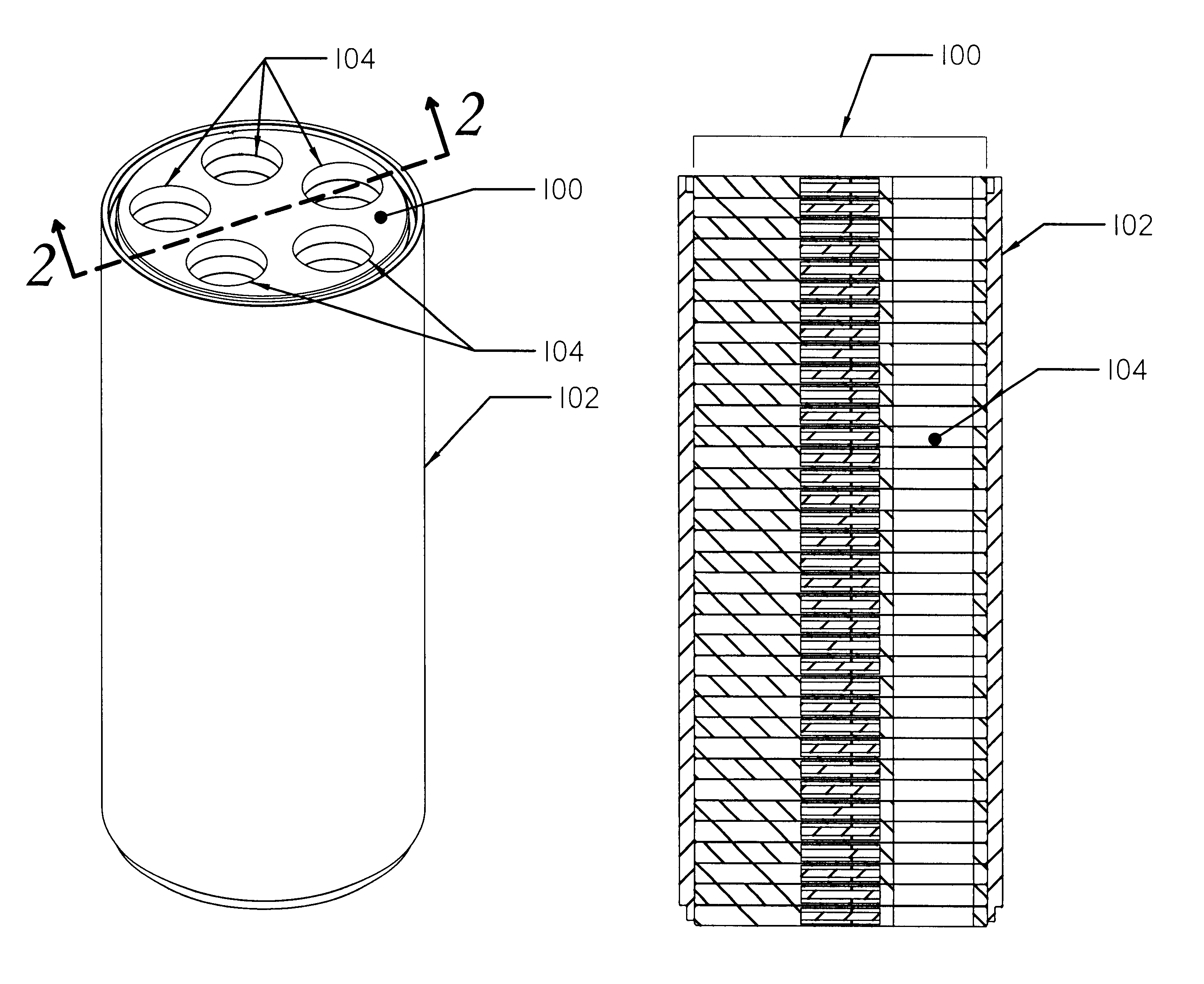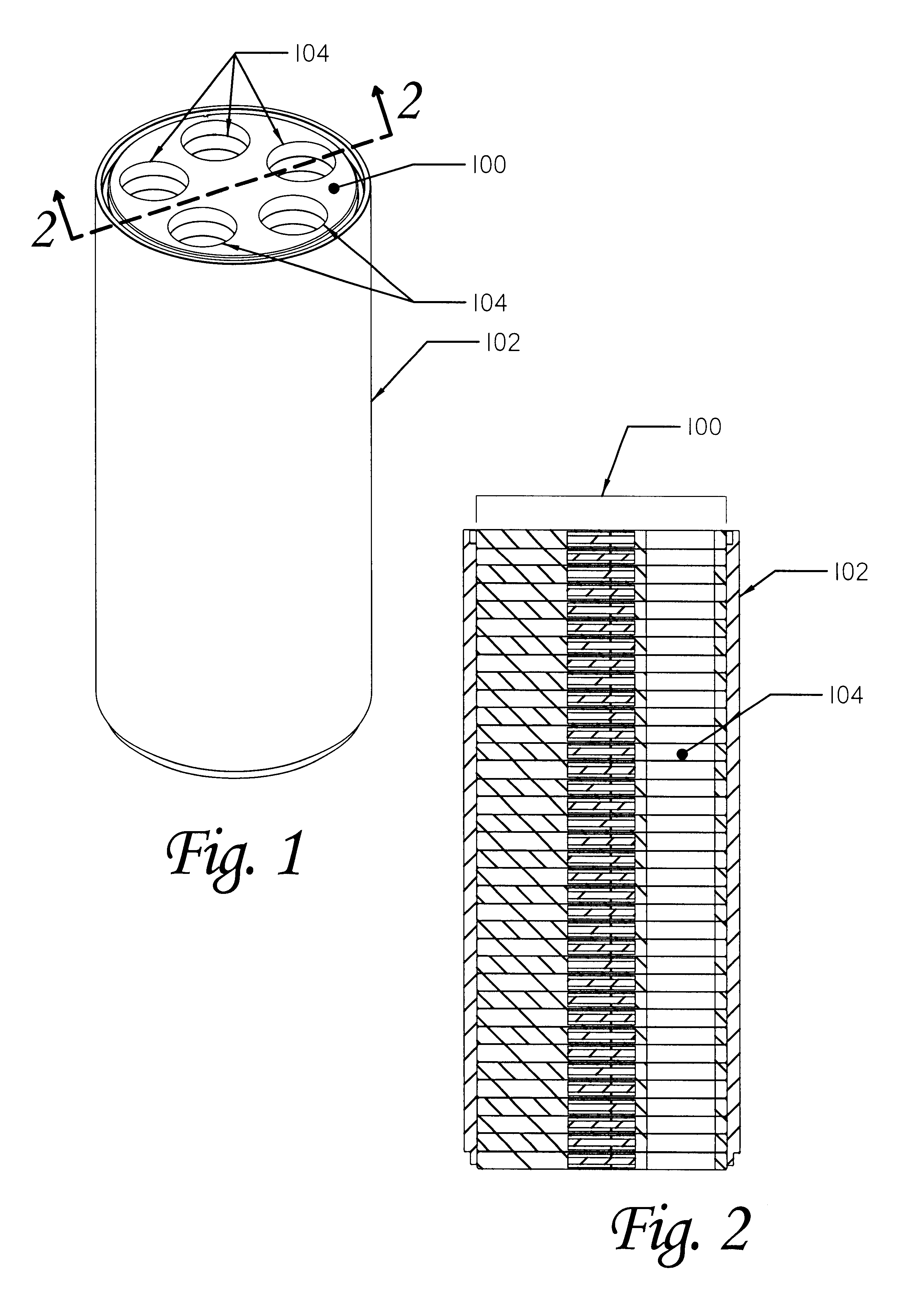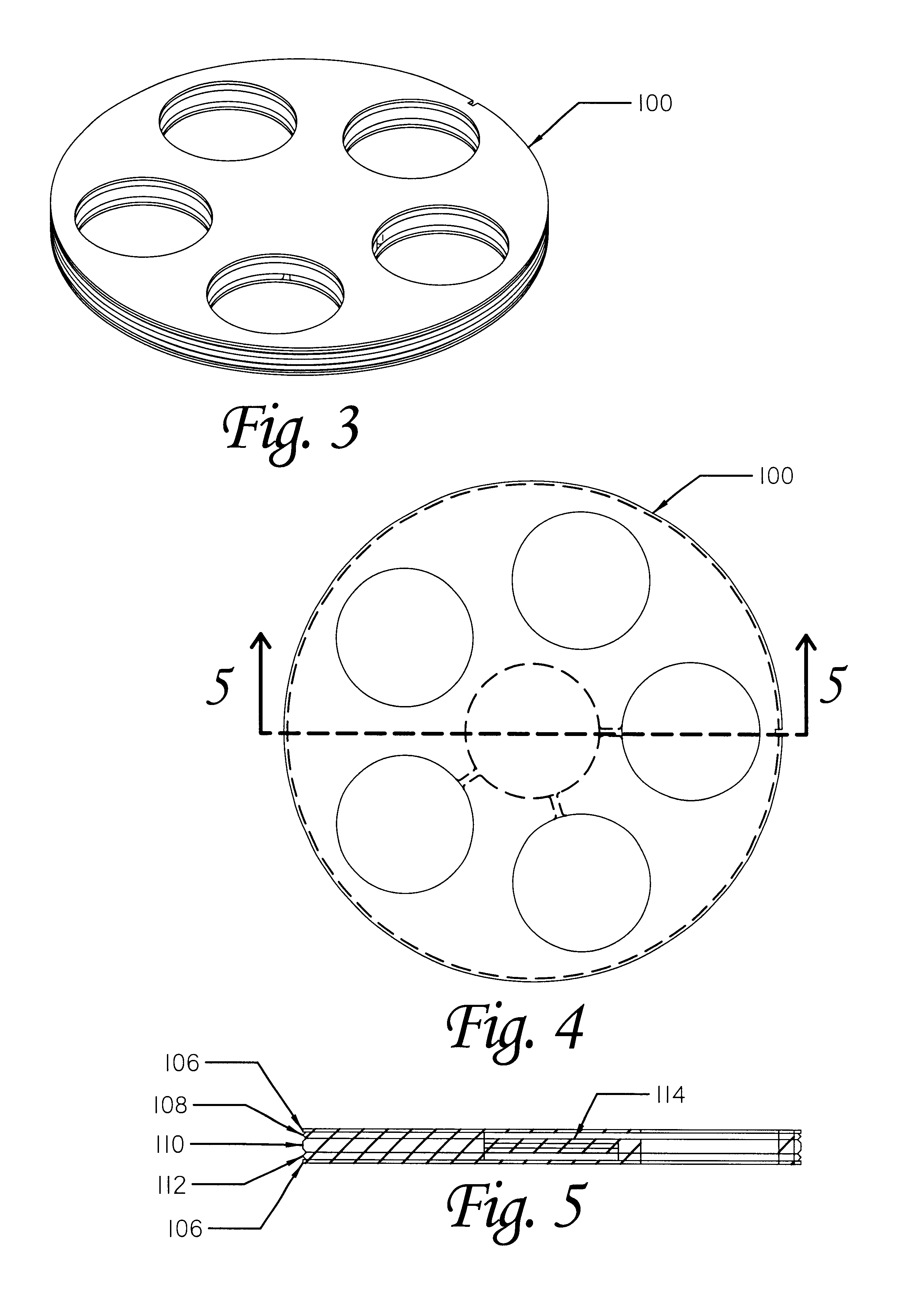Apparatus and method for heating subterranean formations using fuel cells
a technology of fuel cells and apparatus, applied in the direction of fuel energy technology, insulation, borehole/well accessories, etc., can solve the problems of huge financial risks, site contamination, and huge construction costs, and achieve the effect of reducing the risk of contaminated sites and reducing the number of contaminated sites
- Summary
- Abstract
- Description
- Claims
- Application Information
AI Technical Summary
Benefits of technology
Problems solved by technology
Method used
Image
Examples
third embodiment
The above embodiments offer an advantage over the third embodiment discussed below in that they provide substantially more internal volume within the fuel cell stack for the movement of fuel, air, and exhaust gases through the stack, the height of which may be 500 feet or more. For example, each fuel conduit running the full length of the stack could have a diameter of two inches. The gas flow rate might typically be 777 cubic feet per hour to supply the stack with sufficient fuel. Such a conduit would allow the gas, at standard atmospheric pressure, to flow at an average speed of 589 feet per minute, or around 7 miles per hour. If the pressure is increased in the fuel conduit, the flow rate can be reduced further. The various plates may be made of ceramic, metal, composites, or other materials. Primary considerations include resistance to corrosion or other reaction with the fuel, air, and exhaust gases; conductivity; thermal expansion; and strength.
Referring again to FIGS. 1 and 2...
first embodiment
The fuel cells disclosed in the first embodiment above have a wafer diameter of approximately 2 inches and an area of 3.14 square inches. At the assumed power density and size, each fuel cell will produce just over 5 watts / hour of electricity and 26 BTU / hour of thermal energy. The target output of 700 BTU / hr / ft will require approximately 27 fuel cells per linear foot. (Assuming 100% transfer to the deposit.) This implies a thickness of approximately 0.44 in. per cell which is readily achievable.
Of course, different values for thermal output desired, power density and efficiency of the fuel cells, etc. will result in different desired fuel cell size and / or spacing.
The relative thermodynamic and economic advantages of the present invention can be clearly illustrated by contrasting the results of an example application using electrical resistance heaters.
In the example application, the target formation to be heated is an oil shale formation 500 feet thick, averaging 25 gallons of oil p...
PUM
| Property | Measurement | Unit |
|---|---|---|
| depths | aaaaa | aaaaa |
| height | aaaaa | aaaaa |
| diameter | aaaaa | aaaaa |
Abstract
Description
Claims
Application Information
 Login to View More
Login to View More - R&D
- Intellectual Property
- Life Sciences
- Materials
- Tech Scout
- Unparalleled Data Quality
- Higher Quality Content
- 60% Fewer Hallucinations
Browse by: Latest US Patents, China's latest patents, Technical Efficacy Thesaurus, Application Domain, Technology Topic, Popular Technical Reports.
© 2025 PatSnap. All rights reserved.Legal|Privacy policy|Modern Slavery Act Transparency Statement|Sitemap|About US| Contact US: help@patsnap.com



